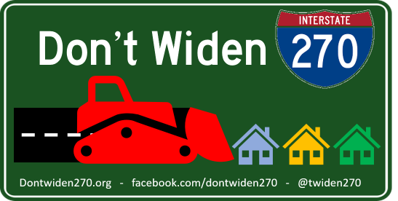Corrected e-mail address for contacting Comptroller Franchot
The September 20th Dontwiden270.org newsletter, “Tell MDOT Why the Toll Lane Project Must Stop,” had an incorrect e-mail address for Comptroller Peter Franchot, who has the deciding vote to determine whether the toll lane project moves forward (more on that below).
Please send him a copy of the written comments you submit to the Maryland Department of Transportation (MDOT). Send these comments to the point person in Mr. Franchot’s office for the Board of Public Works (BPW), Assistant Comptroller Anne Klase.
The correct e-mail address for Ms. Klase is aklase@marylandtaxes.gov.
For more information about sending written comments to MDOT, see Dontwiden270.org DEIS-Resources and Sept. 27 blog post.
Why is it important to contact Peter Franchot?
Peter Franchot is the Comptroller of Maryland, one of only a handful of statewide elected officials. The Comptroller’s official duty is to collect the State’s taxes, and as he puts it, function as Maryland’s Chief Financial Officer (CFO), but his influence on State policy is broader than that.
He serves as one of three members of the BPW, the State’s unique 150-year-old financial control body. The BPW, whose voting members are the Governor, the Comptroller, and the State Treasurer, meets every two weeks to approve virtually every State contract of significance.
In this role, the Comptroller is in a position to cast the decisive vote on the 495-270 P3 project, since the Governor is the project’s chief advocate, and Treasurer Nancy Kopp has been the Board’s chief skeptic.
Franchot has already expressed his intention to run for Governor in 2022. So his future votes on proposed P3 contracts as a member of the BPW will determine not only the fate of the 495-270 toll-lane widening project, but also have a major impact on his Administration as Governor—if he is elected.
